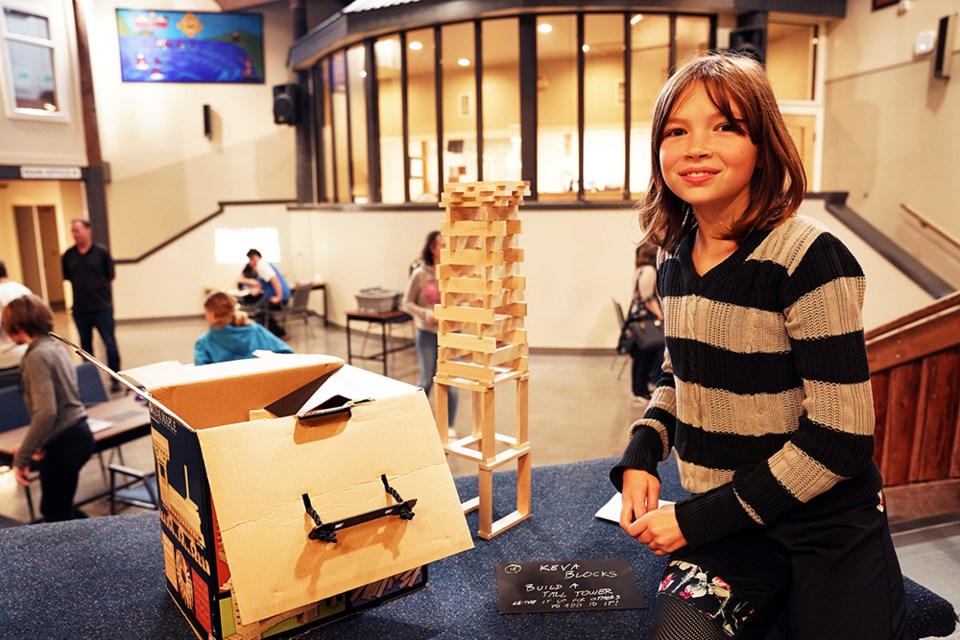A group of School District 47’s partners in education (PIE) students have taken a program to learn about programming.
The PIE program is an online learning school that allows children to be educated, in part or whole, at sites outside of regular school campuses.
In a session held at the former Oceanview School, PIE students assembled to learn about coding, which is also known as computer programming. Ian Landy, district principal of technology, said he is trying to bring different activities, ideas and programs to generate different thinking, to build a coding mindset, and get people comfortable with different levels of technology.
The PIE exercise featured 30 different coding stations that the pupils went through to work different parts of their brains, and experience different elements of the experience of a coding activity, because those undertaking the computer programming are going to have moments of great success, and moments of failure and frustration, according to Landy.
“By having 30 stations, everybody is going to have one they love, they’re going to have one they don’t like whatsoever, and that’s part of the whole job experience as well,” said Landy.
The 30 stations featured both analog and digital exercises for students to try. Landy said coding is not just done on computer screens.
“People sometimes don’t know or forget that there’s a lot of work that goes on white boards and physical models before you start building in the digital world,” said Landy. “So, it’s getting people comfortable with the idea that coding is not just a digital experience. It’s analog, it’s two-dimensional, it’s three-dimensional, at all different levels.”
Landy said by going to the 30 stations, hopefully, students would find something that would pique their interests so teachers can then bring more activities into the classrooms, to build up stations to either help them develop their design-thinking mindset, to start exploring some more coding activities, and start doing some introductory programming through classroom projects. Landy’s hope is that students start some introductory programming through classroom projects, finding ways that coding can help solve problems.
Landy said there are many industry jobs that deal with elements of coding that are not being filled.
“It’s one of the new vocational skills that there are not enough workers for,” said Landy. “Once students get to be familiar with coding ideas, it’s going to help them with problem solving. If we can introduce students who didn’t necessarily think they liked coding, and get them sparked, I’ve seen that happen every year.”
Landy said coding is not just for people with mathematical minds. He said that other skill sets are involved.
“I do not consider myself a mathematician, and math definitely helps, but it is not essential,” said Landy. “There’s many different levels and pieces that have to work together in order to make an effective team.”
The range of students taking part in the PIE coding workshop was from grade three to grade nine. He added that coding can be taught from kindergarten to grade 12.
Landy said in his position as district principal of technology, he is trying to make inroads into the different schools. The PIE session was his dress rehearsal for taking coding into the district’s schools, he added.
“I want to fine-tune activities and we’ll be making it available, ideally, for every class to get an hour of coding experience this year,” said Landy. “Technology continues to expand and explode. I get to do some problem solving to help identify ways that the most powerful tool of differentiation can make an impact on every students’ and teachers’ experience in the K to 12 system.”





